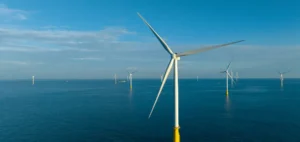In Germany, 17 wind farms operational since 2002 to 2008 are set to undergo a major transformation. These farms, with a current total capacity of 151.9 MW, will be upgraded by Novo Holdings and European Energy to host more efficient turbines capable of tripling their renewable energy output.
This upgrade will enable an annual production of 1,100 GWh of electricity, sufficient to power nearly 290,000 households. The project is part of the national energy strategy aimed at reducing reliance on fossil fuels by increasing the share of renewable energy sources.
A strategic timeline
The modernization work, also known as “repowering,” will enter the preparation phase between 2025 and 2027. The upgraded farms are expected to become operational between 2027 and 2030. The technological advances of the new turbines ensure better utilization of natural resources without requiring additional land.
The necessary rights for the implementation of the projects have already been largely secured, reinforcing their feasibility and relevance in achieving Germany’s climate goals.
Economic and political context
This initiative comes amid strong demand for renewable energy in Germany, driven by the energy transition and the increasing electrification of society. The country continues to attract investments thanks to its regulatory framework supporting onshore wind energy.
Although driven by private companies, this project underscores the importance of public-private partnerships in developing strategic energy infrastructure.
A lasting impact
Beyond improving energy capacity, this project demonstrates how modern technologies can transform aging infrastructure into state-of-the-art assets. The economic benefits, including job creation in energy-related and construction sectors, add to the environmental gains.





















